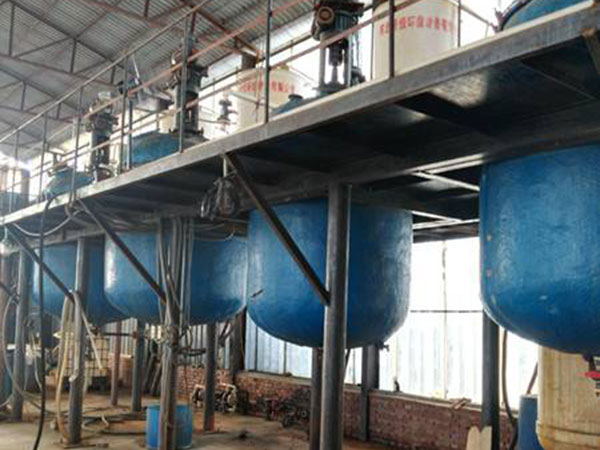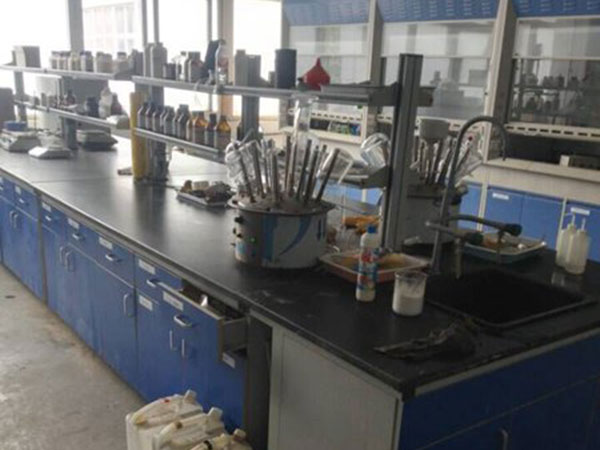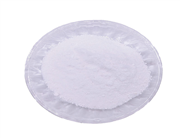| Coal-tar chemical industrial products | Pyrene is one of the processing products of coal tar with the content in the coal tar being about 0.6 to 1.2% and is mainly concentrated in the anthracene oil fraction. Pyrene is a kind of solid aromatic compound with its molecule comprising of four benzene rings connected with each other. Pyrene has its molecular formula of C16H10, molecular weight of 202.26, melting point of 150 °C, boiling point of 393 °C and the density of 1.277g/cm3. Pyrene appears as pale yellow crystalline monoclinic tablets, insoluble in water and easily soluble in benzene, toluene, carbon disulfide, ether and other organic solvents. Pyrene is carcinogenic and can be converted to mutagenic 1-nitro-pyrene under the effect of nitrogen dioxide. The position 1 and position 6 of pyrene can easily react with electrophilic reagent as well as have oxidation and hydrogenation reaction. Pyrene can also have halogenation, nitration and sulfonation; mono-substitution occurs at the 3-position, di-substitution includes 3, 10 and 3, 8-position with 3, 10 being more frequent. Its oxidation can generate 3, 10-quinones and 3, 8-quinones which can further oxidized to generate 1, 4, 5, 8-naphthalene tetracarboxylic acid.
Pyrene can be used in the production of dyes such as indanthrone dyes and anthraquinone vat dyes. The extraction method of is: take the residuum or bitumen distillate oil produced from the distillation of the anthracene fractions as the raw material, perform distillation under reduced pressure, take the 390~400 ℃ fraction which contains about 40% of pyrene fraction, then use 25% of the coal tar solvent oil and 75% ethanol mixed solvent (the volume of the solvent: pyrene fraction: 1:12), and recrystallized for several times until qualified products are obtained.

Pyrene belongs to low toxicity compounds and has mild irritation effect on the skin, eyes and upper respiratory tract. Long-term inhalation can cause aglobulism and mild liver and kidney damage. Long-term exposure upon 3mg/m3~5mg/m3 can cause headaches, fatigue, loss of appetite, and being prone to excitable.
The above information is edited by the chemicalbook of Dai Xiongfeng. |
| Probing agent for determination of the fluidity of membrane lipid | Pyrene is a commonly used probe for determination of the fluidity of the membrane lipid with high quantum yield but shorter excited lifetime than DPH (1, 6-diphenyl a 1, 3, 5-triene), so it is not sensitive enough for determination of the slight change in the lipid fluidity and is suitable for system of greater mobility. The excitation wavelength of pyrene is 342nm and the emission wavelength is 383nm with the excitation and emission spectra overlapping significantly with each other. Pyrene mainly bound to the hydrocarbon chain of the membrane lipid. Once a monomer formed via the binding between a pyrene molecule to lipid molecule had been excited by light, it move and be close to another pyrene molecule which has not been excited yet via lateral diffusion motion, forming collision compounds namely excitation dimer. The efficiency for the formation of the excitation dimer depends on the concentration of pyrene binding to the membrane lipid as well as the viscosity of the medium surrounding the pyrene. When the concentration and temperature of pyrene becomes stable, the ratio of the fluorescence intensity between monomer and dimer will decrease with the increasing viscosity of the medium surrounding the pyrene, namely pyrene, based on the ratio of the fluorescence of dimer to monomer, can reflect the lateral diffusion rate of the lipid molecule. High medium viscosity will cause small lateral diffusion rate and small liquidity.
Reference: Editor: Huishan Liu, Binxue Liu & Zedai Fang; Reviwer: Shuyun Xu & Chuanggeng Ma; English-Chinese dictionary of pharmacology. |
| Chemical Properties | It appears as light yellow monoclinic crystal. It is insoluble in water, easily soluble in ether, carbon disulfide, benzene and toluene. |
| Uses | It can be used as raw material of organic synthesis. For example, it can be used for production of 1, 4, 5, 8-naphthalene tetracarboxylic acid via oxidation. It can be applied to dyes, synthetic resins and plastics; it can also be used for the manufacturing of vat dye Brilliant Orange GR and various kinds of other dyes. Moreover, it can also be used for the manufacturing of pesticides and plasticizers. |
| Production method | Pyrene is mainly presented in the distillates of coal tar pitch. Send the asphalt for vacuum distillation under medium temperature; at the same time, directly send a small amount of the overheated steam to the distillation vessel; take the narrow fraction of pyrene and then use the mixed solution of solvent oil and ethanol or a mixed solution of benzene and solvent oil for recrystallization to obtain industrial pyrene with purity of 95%. |
| Description | Pyrene is an organic compound with chemical formula C16H10, light yellow monoclinic crystal (pure product is colorless), aromatic, combustible[1], insoluble in water and soluble in ethanol and ether. It can carry out electrophilic substitution, such as halogenation, nitration, sulfonation and other reactions. Pyrene mainly exists in the distillate of coal tar pitch. Pyrene is an organic synthetic raw material, which can be oxidized to produce 1,4,5,8-naphthalene tetracarboxylic acid, which is used in dyes, synthetic resins, disperse dyes and engineering plastics; After acylation, the vat dye brilliant orange GR and other dyes can be prepared. It can also make pesticides, plasticizers, etc. On October 27, 2017, the list of carcinogens published by the international agency for research on cancer of the World Health Organization was preliminarily sorted out for reference. Pyrene was included in the list of three types of carcinogens. |
| Chemical Properties | pale yellow to yellow-greenish crystals or chunks |
| Chemical Properties | Pyrene is a colorless crystalline solid when pure or pale yellow plates (impure). Polycyclic aromatic hydrocarbons (PAHs) are compounds containing multiple benzene rings and are also called polynuclear aromatic hydrocarbons. Solids and solutions have a Blue fluores- cence (Merck Index). |
| Physical properties | Colorless solid (tetracene impurities impart a yellow color) or monoclinic prisms crystallized from alcohol. Solutions have a slight blue fluorescence. |
| Uses | Pyrene occurs in coal tar. Also obtained by the destructive hydrogenation of hard coal. Found in wastewater in aquatic environments, and possesses genotoxic characteristics relating to estrogenic/andr ogenic, antiestrogenic and antiandrogenic activity. |
| Uses | Pyrene and its derivatives are used commercially to make?dyes?and dye precursors, for example?pyranine?and naphthalene-1,4,5,8-tetracarboxylic acid. It is used as a probe to determine solvent environments and fluorescence spectroscopy. |
| Uses | Pyrene may be used as an analytical reference standard for the quantification of the analyte in environmental tobacco smoke samples using high-performance liquid chromatography technique. |
| Production Methods | There is no commercial production or known use for this compound. Pyrene has been used as starting material for the synthesis of benzo[a]pyrene. |
| Definition | A condensed ring hydro- carbon. |









 China
China


 Company information
Company information Advantage
Advantage


